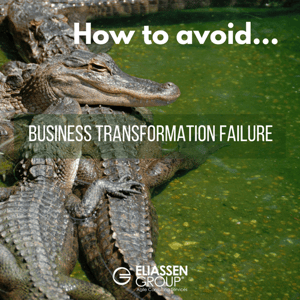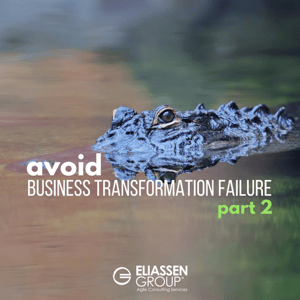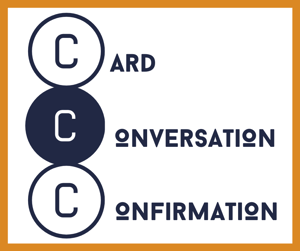The Next Three Keys to Agile Transformation Success
Part 1 discusses the first three keys to success in an Agile Transformation:
- Identify and establish expectations of transformation value with Sponsors / Executives
- Establish and align with Sponsors’ objectives and key results (OKRs) for the next 90 days
- Identify experienced Agile coaches to help define and implement the best way forward
We also encourage you to avoid the largest traps that Agile principles guide against — busy work. It is best to deliver value early. Define teams and transition them to scrum delivery as early as time permits. All else must be subordinated. An experienced Agile coach can start multiple teams to scrum without any enablement of pre-defined training or tools. They are dependent on leadership support to identify specific, dedicated, and willing people to work on the new Agile team. Often the largest challenge fits into the category of "change management." Emotional intelligence and stress management skills become paramount in the success of your transformation.
Assuming you have implemented keys 1, 2, and 3, you are ready for the next keys to a successful transformation.
The next three keys to success in an Agile Transformation include:
- Coach leadership
- Stand up Agile teams
- Process map
4. Coach leadership on a mindset of outcomes instead of outputs and on how to understand how their role transitions from management to leadership, to define deliverables in terms of value, and to support investment that will help the teams deliver value faster and with built-in quality.
A common and understandable pattern during early stages of transformation is to confuse the difference in functional efficiency with value delivery. In Agile, we learn to "slice" our large programs into small valuable deliverables, prioritize them, and then work as a team to swarm to deliver highest-value incrementally. Agile values and principles subordinate functional efficiency and reinforce the value of flow: time to market and incremental delivery of small valuable work-items Agile calls stories.
Change management becomes a critically important skill. Leadership, Coaches, Scrum Masters and Development team members need to empathize with each other to deter the impact of introducing any new delivery practices to the team. We can mitigate the unknowns through small experiments while fully understanding the impact on all team members.
I claim the greatest initial value for any Agile Transformation is to learn by doing - stand up Agile teams. Focus on an "early adopter" organization, identify the first team roster, provide appropriate training, and refine initial backlog and working agreements. Start sprinting and coach to build a foundation of known good practices. In a short two weeks, you will understand your actual impediments to predictability, and you will have one data point on "demonstrated capacity." You will create a backlog for the transformation team to work on. After standing up your first Agile team(s), you are on your journey. You have delivered value.
Collaborate with leadership to celebrate success. Listen to their objections, be available to answer questions, clarify answers to their objections, empathize with their perspective, and relate your answers to principles. Help everyone think through their role as it transitions.
→"Often the largest challenge fits into the category of "change management." Emotional intelligence and stress management skills become paramount in the success of your transformation."
5. Professional Agile transformation coaches will have knowledge, experience, and a toolkit to stand up and mature Agile teams. The only prerequisites are for all Agile team members to be identified and made available. A reasonable ratio is three new teams per full-time agile coach. As those teams mature, the coach can move onto the next teams ready to stand up. The backlog of the Agile transformation team is primarily teams to stand up, or in some cases to reset. There may be some enablers as well, as the teams identify impediments that are slowing them down.
The Scrum (and Kanban) frameworks are "simple to understand and difficult to implement." Your Agile coach will help you make the best trade-offs given the context of the environment and impediments. Eliassen has a methodology that has stood the test of time to work and to scale: 2 days of "whole team" training, including an entire team or teams at a time, followed by 2 days of an Agile "Boost" or sprint 0 workshops. These four days can be immediately followed by a 1-day sprint 1, from which the coach would ensure the scrum events are off to a good start and be available to work through any impediments to flow that are encountered.
Bridging business and IT comes down to credibility. Collaborating on sprint goals and longer-term objectives in terms of business value, as well as including stakeholders in the Sprint Review meeting, are both practices that lead to credibility. Consistent, predictable delivery of commitments builds credibility. Transparency builds trust and reinforces the benefit of good Agile practices and ultimately evolves the culture of the organization as these new practices become the new norm.
6. Value Stream Map for a common understanding of what impedes flow. Maintain an impediment backlog and continuously improve through the allocation of capacity to improvement.
The first step to speeding delivery with good quality is to identify which steps take time and which have anything less than perfect quality. Process mapping has long been a technique to analyze and improve processes. With the understanding of the vast array of possible solutions and appropriate application thereof, an impediment removal roadmap can be built with the cross-functional delivery team. Don’t forget to include decision delays, queues, and batching.
According to the DevOps Research Association (DORA) survey, Elite companies (the highest performing quadrant) invest a minimum of 20% of team capacity on built-in quality improvements. The best practice is for teams to maintain an impediment removal roadmap and a strategic decision, supported by leadership, to allocate 20%+ capacity to improvements. For enterprises where this investment is not palatable, coaching leadership and product owners to support small experiments with measured results may be the best way to break the log jam.
In my experience, these are the most effective ways to enter the world of Agile and to build a foundation for growth. This includes forging a mindset that builds the bridge between IT and business, and that includes leadership and executive sponsors to help the teams with fully transparent information related to plan, execution, risks, and deciding where the teams need help to remove impediments.
Remember, these are our 6 keys to success in an Agile Transformation:
- Identify Executive Sponsors
- Collaborate to identify Vision and success measures for the transformation
- Identify at least one experienced Agile Transformation Coach with solid change management skills
- Coach Leadership
- Stand up and mature agile teams
- Build an implementation roadmap through Value Stream Mapping
Now that you know the keys to success, which metrics should you use to define success?
If you missed part one of our series, read more about the first three keys to an Agile Transformation, and explore our Agile consulting services.



